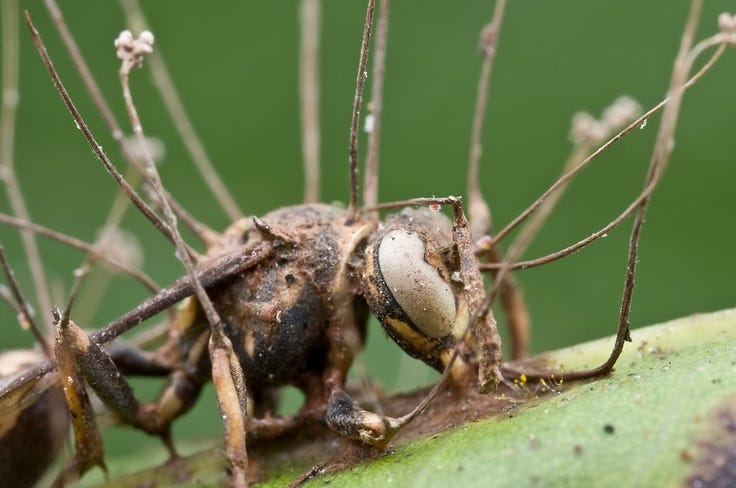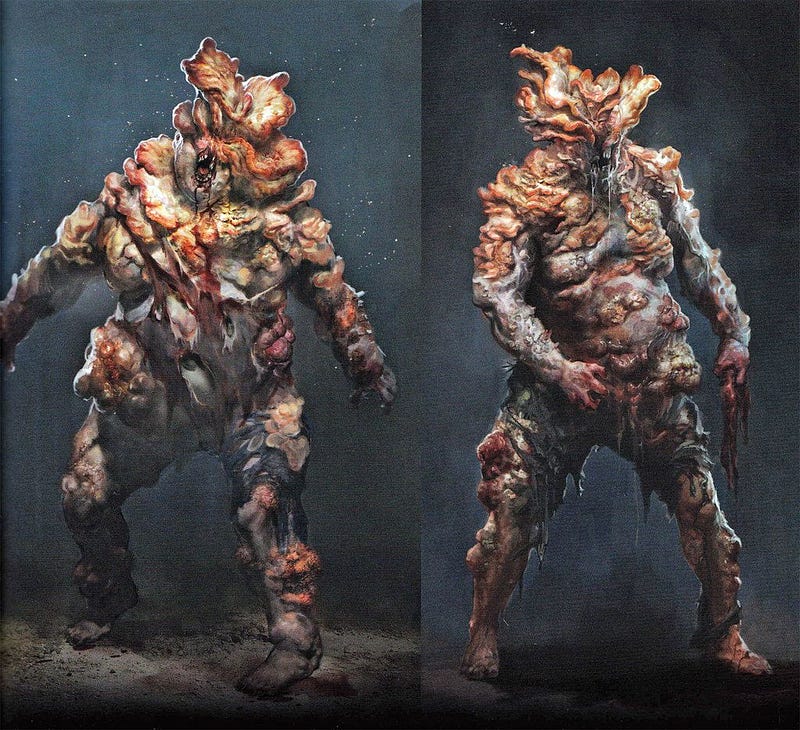The Zombie Fungus: Nature's Chilling Reality
Written on
Chapter 1: The Allure of the Undead
The concept of the undead has fascinated humanity for centuries. From the Norse Draugr to the Chinese Jiangshi and the Greek Vrykolakas, diverse mythologies illustrate our collective fear and curiosity surrounding zombies. Surprisingly, this notion isn't solely a product of fiction.
In the lush rainforests of Thailand and Brazil, a real-life phenomenon exists: the fungus Ophiocordyceps unilateralis. This parasite preys on ants, ultimately leading to their demise while altering their behavior in the process.

As the fungal spores settle on an unsuspecting ant, they employ enzymes to breach the insect's resilient exoskeleton. Once inside, the fungus takes advantage of the host's internal conditions, such as optimal temperatures and nutrient availability, to proliferate rapidly.
This swift growth can inflict damage to the ant's nervous system, resulting in significant behavioral changes. The fungus releases various chemicals, including anti-pathogenic toxins to fend off competing pathogens, and other compounds that disrupt the ant's circulatory system. Consequently, the affected ant experiences involuntary spasms, leading it to fall from its colony to the forest floor.
Upon reaching the ground, the fungus exerts a precise influence over the ant's behavior. It compels the ant to ascend to a height of approximately 25 cm above the forest floor and latch onto a leaf vein. Following this, the fungus induces muscular deterioration in the host, rendering it incapable of moving or releasing its grip—a phenomenon ominously known as the "death grip." This allows the fungus to access water and glucose through the ant's mouth, ensuring its survival and reproduction even as the ant succumbs.
The fungus's hyphae infiltrate the ant's tissues, reinforcing its exoskeleton and secreting further anti-pathogenic substances. Mycelia anchor the ant to the leaf more securely, and fruiting bodies emerge from the head and neck of the deceased ant, extending long stalks. This strategic positioning maximizes spore dispersal when the fruiting bodies rupture, effectively targeting surrounding ant colonies. The only significant threat to O. unilateralis is a still-unknown hyperparasite that preys on it.

Ophiocordyceps unilateralis gained fame as the inspiration for the acclaimed video game "The Last of Us," where the fungus undergoes a terrifying mutation to infect humans. However, in reality, such a mutation would require extensive changes, as the complexity of human physiology far exceeds that of ants. Fortunately, no fungi currently exist that can infect humans, though the scientific implications are certainly intriguing.
The fascination with the undead, whether viewed through a scientific lens or as part of cultural lore, continues to captivate human curiosity, transforming the mythos into a speculative "what if" scenario.
For further insights, explore:
Ophiocordyceps unilateralis
This entomopathogenic fungus was first documented by British naturalists and is a key player in the study of insect-pathogen interactions.
www.strangeplants.org
Chapter 2: Exploring the Zombie Fungus Phenomenon
This video delves into the real-life zombie fungus that inspired the chilling narrative of "The Last of Us," showcasing its fascinating and eerie effects on ant behavior.
In this National Geographic feature, learn how the 'zombie' parasite Cordyceps fungus exerts mind control over insects, revealing the extraordinary complexities of nature's design.